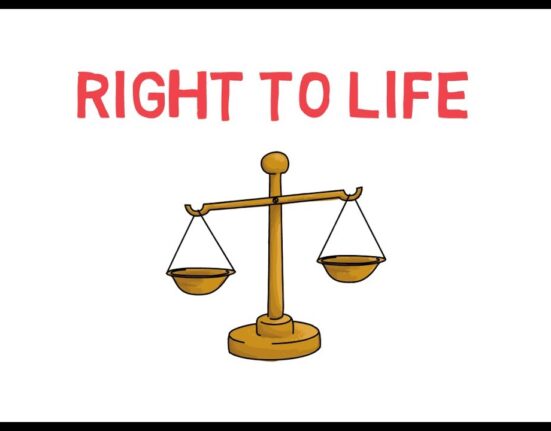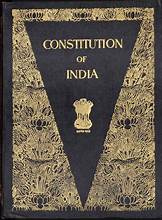Mitakshi Sahni, a 2nd year Law Student has written this Article “The Making of the Indian Constitution”.
Introduction
26 January,1950, is known as a red-letter day[1]in the vast history of India. This was the day when India announced the birth of a new republic, to the world. India is the world’s largest democratic country with the lengthiest constitution, which holds a massive history behind its formation.
A constitution is a formal document with legal recognition that sets out the framework and basic structure of a nation along with a set of rules, regulations, duties, and principal organs. It is a well-suited statement that every constitution is the heir of the past and the testator of the future. [2]
The Indian constitution is considered the “mother of all laws” and an outcome of immense research and deliberations by a committee of eminent representatives of the people. Moreover, The committee members focused on improving the administrative system and this was done by making a retrospect of the constitutional development as it was necessary for a proper understanding of the constitution.[3] India has established the ‘rule of law’; the supremacy of the constitution. It suggests that everyone is bound by the law and severe consequences will be faced if violated.
The features of the constitution of India have taken provisions from different constitutions all over the world and other sources as well. The provisions were compiled into a single codified document. The Indian constitution is neither too rigid nor too flexible but a combination of both. It is not just a formal document but an identity of citizens of India as well.
Constituent Assembly
The making of the Indian Constitution was not an easy task, it required many deliberations and amendments in the draft before finalizing it. This massive task took 2 years 11 months and 18 days to be completed. A Constituent Assembly was established for performing this task i.e., The making of the constitution of India. Although the Constituent Assembly was formed in 1946, but attempts were made long before that.
Role of British
The British introduced many acts prior to the Constitution of India that became important sources while making the Indian Constitution. Such acts included; The Indian Councils Act, 1892. The Government of India Act,1919, The Government of India Act, 1935, etc. The British were trying since 1858 to form a Constituent Assembly but with the objective of fulfilling their colonial interest and strengthening their hold over India.
Role of Indian National Congress
India made its first attempt to draft a constitution for itself in the year 1928, this attempt was made under the guidance of Motilal Nehru- a lawyer and politician of the Indian National Congress. This appeal was a part of the Nehru Report, 1928. Then later in 1934, M.N. Roy- founder of the Communist Movement and a supporter of Radical democracy, proposed the idea of framing of Constituent Assembly. This idea was then supported by the Indian National Congress and the demand of the Constituent Assembly was put forward in 1935.
In 1938, Jawaharlal Nehru also proposed that the constitution of independent India should be framed by a Constituent Assembly. He suggested the Constituent Assembly should be elected on the basis of Adult Suffrage and free from external interference. Moreover, He insisted that the Constituent Assembly should only have Indians. Initially, the demand of Indians to have a Constituent Assembly was opposed by British officials. But later, the demand was accepted by the British due to the ongoing World War- II and the change in the government of Britain in 1940.
Formation and Structure of Constituent Assembly
On 8 August 1940, Lord Linlithgow- the then Viceroy of India proposed the ‘August Offer’ on the behalf of the British Parliament, and the demand of the Constituent Assembly was accepted in the ‘August Offer’ by the British. The British promised that after the end of World War II, a Constituent Assembly will be established for determining the Constitutional future of India.
The Cripps Mission
In 1942, the British government sent Sir Stafford Cripps- their cabinet member, to negotiate with Indian members under the Cripps Mission. Sir Stafford Cripps suggested various proposals including; the establishment of a body for framing a new Constitution for India, and the participation of Indian states in the Constituent Assembly. Indian National Congress and Muslim League rejected the proposals of the Cripps Mission. Indian National Congress opposed the British offer of Dominion status whereas Muslim League put forward their demand for two autonomous states and two Constituent Assemblies. The rejection of suggestions for the mission led to the failure of Cripps Mission.
The Cabinet Mission
Cabinet Mission came to India in 1946 to discuss the transfer of power to Indian politicians from the hands of the British. Three cabinet members- Lord Pethick Lawrence, Sir Stafford Cripps, and Mr. A.V. Alexander, were part of the Cabinet Mission Plan, 1946. On the proposal of the Cabinet Mission, a basic framework was prepared for the formation of the Constitution of India. According to this mission, seats in the Constituent Assembly were allotted as per the population of all provinces and princely states. The total number of seats in the Constituent Assembly was 389 out of which 296 representatives were from British India and 93 representatives from princely states.
Elections were held for British Indian provinces in 1946, for Constituent Assembly. In this election, 208 seats were won by Indian National Congress, 73 seats by Muslim League, and 15 independent candidates. However, the members of the Constituent Assembly were indirectly elected by restricted Adult Franchise and included representatives from all over India. There were 15 women members in the Constituent Assembly.
Role of the Constituent Assembly
The Constituent Assembly had its first meeting on 9 December 1946. However, the Constituent Assembly was boycotted by the Muslim League which demanded a separate state. At the first meeting, Mahatma Gandhi and Mohammed Ali Jinnah were also absent and 211 members were present only.
India followed the French tradition; the oldest member of the Constituent Assembly was appointed as temporary President of the Constituent Assembly, in India Dr. Sacchidananda Sinha was appointed for this position and became the first acting chairman of the Constituent Assembly. Later, Dr. Rajendra Prasad and H.C. Mukherjee became President and Vice President of the Constituent Assembly respectively. B.N. Rau was appointed as the constitutional advisor of the assembly.
On 13 December 1946, Jawaharlal Nehru presented a resolution in the Constituent Assembly, that was about to be the foundation of the Indian Constitution. This resolution is known as the ‘Objectives Resolution’, with the vision for independent India, which established the foundation of constitutional structure and philosophy. It was about the principles and objectives of the constitution, later recognized as the Preamble (Sovereign, Socialist,[4] Secular[5], Democratic Republic). The Objectives Resolution was adopted by the Constituent Assembly unanimously on 22 January 1947.
Declaration of Independence
Clement Attlee- former British Prime Minister, announced in British Parliament in February 1947, that power will be transferred to Indian politicians and the British will leave India. Then in June 1947, Lord Mountbatten- Viceroy of India, made a proposal, known as the Mountbatten Plan. This plan accepted the partition of India into two dominions- India and Pakistan. The seats in the Constituent Assembly were reduced to 289 as many provinces were no longer part of Indian territory.
In July 1947, The Indian Independence Act, 1947 was passed in the British Parliament which declared the Constituent Assembly as an independent and sovereign body. The Constituent Assembly became the legislative body also and due to this law-making feature, it was also known as the first Parliament of India. G. V. Mavlankar presided over the assembly to fulfill its legislative feature. Both tasks were performed till 26 November 1949. To prevent mismanagement and balance the pressure of work, many committees were formed. One of the most important committees was the Drafting Committee.[6]
The Drafting Committee
The Drafting Committee was the most important committee formed while making of the Constitution of India. This committee was appointed by the Constituent Assembly through a resolution. The committee was chaired by Dr. B.R. Ambedkar and had 7 members including the chairman. The other members of the committee were Dr. K.M. Munshi, Syed Mohammad Saadullah, Alladi Krishnaswami Ayyar, N. Madhava Rau, N Gopalaswamy Ayyangar, and T.T Krishnamachari.
In less than 6 months, the committee prepared its first draft, and it was presented in February 1948. People had a time period of 8 months to debate over the first submitted draft and offer revisions. Such modifications, criticism, and suggestions were kept in mind while preparing the second draft, which was presented in October 1948. Finally, On 4th November 1948, Dr. B.R. Ambedkar presented the final design of the Constitution in the Constituent Assembly. The debate over the final design lasted for 32 days and 7635 amendments were proposed from which on 2443 amendments, the debate was done extensively.
Enactment and Enforcement
Originally, the Constitution of India had 395 Articles, 12 schedules, and 22 parts but at present, it has 448 Articles, 12 schedules, and 25 parts. The Indian Constitution was completed in 2 years 11 months and 18 days, with 11 sessions of the Constituent Assembly. Moreover, The makers of the Indian Constitution went through constitutions of over 60 countries. The last meeting of the Constituent Assembly was held on 24 January 1950.
On 26 November 1949, the Constitution of India was adopted with the presence and signature of 284 members and the President. 26 November is thus celebrated as Constitution Day across India every year. But except provisions like citizenship, election, provisional government, etc.[7], rest of the important part of the constitution was enacted on 26 January 1950. The date 26 January was chosen because of its historical importance in Indian history; On this date, in the year 1930, Indian National Congress passed the resolution of the Declaration of Poorna Swaraj (complete self-governance).
Other works
The Constituent Assembly adopted the National Flag of India in its present form on 22 July 1947. The assembly also adopted National Anthem[8] and National Song[9] of India on 24 January 1950.
The Constitution had its original copy in both Hindi and English language, written by Prem Bihari Narayan Raizada. Typing or printing was not used for original copies of the constitution. This task took 6 months to complete. Each page of the Constitution of India was decorated by Nandlal Bose whose assistant Ram Manohar Sinha helped him to design the introduction page of the Constitution.
Get a copy of the Indian Constitution. Click here!
Also Read: Fundamental Rights Under Indian Constitution. Click Here!
[1] A day that is pleasantly memorable
[2] Jennings- Some Characteristics of the Indian Constitution, p. 56 (1953)
[3] D.D. Basu- Introduction to the Constitution of India, p. 3, (3rd ed., 1946)
[4] Added by the 42nd Amendment Act, 1976
[5] Ibid
[6] Established on 29 August 1947
[7] Came into force on 26 November 1949
[8] Jana Gana Mana- originally composed in Bengali as Bharoto Bhagyo Bidhata by Rabindra Nath Tagore on 11 December 1911
[9] Vande Mataram- written by Bankim Chandra Chatterjee
![]()






Leave feedback about this